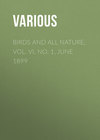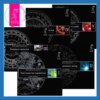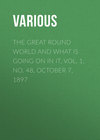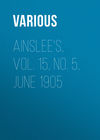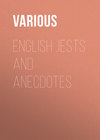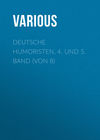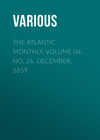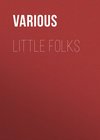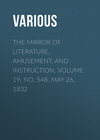Читать книгу: «Birds and All Nature, Vol. VI, No. 1, June 1899», страница 4
THE BLUE-WINGED YELLOW WARBLER
(Helminthophila pinus.)
NOT a great deal is known about many of the warblers, and comparatively little has been observed of this member of the very large family, comprising more than one hundred species. This specimen is also recognized by the name of the blue-winged swamp warbler. Its habitat is eastern United States, chiefly south of 40 degrees and west of the Alleghanies, north irregularly to Massachusetts and Michigan, and west to border of the great plains. In winter it lives in eastern Mexico and Guatemala.
It has been pointed out that the name of this bird is misleading, as the blue of the wing is dull and inconspicuous, and not blue at all in the sense in which this color distinction is applied to some other birds. When applied to the warblers, it simply means either a bluish-gray, or slate, which seems barely different from plain gray at a short distance.
In half-cleared fields which have grown up to sprouts, and in rich open woods in the bottom-lands, where the switch-cane forms a considerable proportion of the undergrowth, the blue-winged yellow warbler is one of the characteristic birds, says Ridgway. The male is a persistent singer during the breeding-season, and thus betrays his presence to the collector, who finds this, of all species, one of the easiest to procure. His song is very rude. The nest is built on the ground, among upright stalks, resting on a thick foundation of dry leaves. The eggs are four or five, white, with reddish dots. The food of the warbler consists almost wholly of spiders, larvæ, and beetles, such as are found in bark, bud, or flower. The birds are usually seen consorting in pairs. The movements of this warbler are rather slow and leisurely, and, like a chickadee, it may sometimes be seen hanging head downward while searching for food.
INDIRECTION
"We hear, if we attend, a singing in the sky."
RICHARD REALF
Fair are the flowers and the children, but their subtle suggestion is fairer;
Rare is the rose-burst of dawn, but the secret that clasps it is rarer;
Sweet the exultance of song, but the strain that precedes it is sweeter;
And never a poem was writ, but the meaning outmastered the meter.
Never a daisy that grows, but a mystery guideth the growing;
Never a river that flows, but a majesty scepters the flowing;
Never a Shakespeare that soared, but a stronger than he did enfold him;
Never a prophet foretold, but a mightier seer hath foretold him.
Back of the canvas that throbs, the painter is hinted and hidden;
Into the statue that breathes, the soul of the sculptor is bidden;
Under the joy that is felt, lie the infinite issues of feeling;
Crowning the glory revealed, is the glory that crowns the revealing.
Great are the symbols of being, but that which is symboled is greater;
Vast the creation beheld, but vaster the inward Creator;
Back of the sound broods the silence; back of the gift stands the giving;
Back of the hand that receives, thrills the sensitive nerve of receiving.
Space is nothing to spirit; the deed is outdone by the doing;
The heart of the wooer is warm, but warmer the heart of the wooing;
And up from the pits where these shiver and up from the heights where those shine,
Twin voices and shadows swim starward, and the essence of life divine.
OUT-DOOR SCIENCE
FREDERICK A. VOGT,
Principal Central High School, Buffalo
THE first step to take in teaching science to young people and in popularizing the study among older people is to throw away much of the traditional polysyllabic phraseology and use a little common sense and good old Anglo-Saxon now and then – to teach nature, instead of science.
There is not only great danger in being too technical, but in telling too much. We all like to talk on our pet subjects. We rattle along, airing our opinions and pouring out big volumes of knowledge, and expect the poor pupils, like great dry sponges, to absorb the gracious gift. But they don't absorb; it isn't their business; they belong to quite another sub-kingdom; and while we are just about to congratulate ourselves on our facility of expression and wise beneficence, we are rudely made aware that our eloquence was all lost; and, worse still, we have been guilty of repression, of stifling natural curiosity, and crushing what might become a priceless, inquiring, intellectual habit.
Is it any wonder that so few ever go on with this geology, mineralogy, botany, or zoölogy, after they leave school? What is our object as teachers? Is it to cram geology and botany down passive throats in one or two school terms, or is it to lead our students so gently and awaken so keen a desire that they shall study these sciences all their lives, to be a never-ending joy, a pure pleasure and a solace amid coming cares and darkening days? Oh, I, too, have been guilty, and may heaven forgive my exceeding foolishness! The remainder of my days are being spent in penance, in propitiating the office of the recording angel by a more humble and righteous way of life.
So much for the language of the teacher, and now for the means of giving reality to his teaching efforts. This can only be done by the laboratory method or investigation in the field. With the latter, out-door work only does this paper especially treat.
ACTUAL CONTACT WITH NATURE
While I do not for a moment decry the use of books, either for collateral reading or for text-books – in fact, I plead for a wider reading and profounder study of the best scientific writers – still, I feel just as you must feel, that there is something radically wrong in much of our science teaching, and that we have come to regard books as more real than the earth, the sky, the rocks; the plants, and the animals, which are all about us.
Just why this is so, I am unable to understand. Nature is so lavish! On all sides, easy of access, are the phenomena and the realities, while the school-room is artificial, and the teacher, alas, in perfect keeping with the school-room.
Can it be that pupils are averse to actual contact with nature? Not at all. From the earliest childhood throughout life there is in most persons a remarkable turn toward curious investigation, and thorough understanding of the things of nature. That I know from my own experience while teaching in the grammar schools.
One day I asked the pupils to bring me in any specimens of stones they might find in the vacant lots and the fields; and then I promised to give them a talk about these stones. I expected perhaps twenty or thirty specimens. What was my amazement and secret horror when, the next day and the next came dozens and dozens of specimens until, in a few days, I had over a ton and a half, containing 3,000 specimens. There were granites, gneisses and schists and quartzes; there were sandstones, slates, shales, limestones, glacial scratchings, marbles and onyx; there were geodes, crystals, ores, stone hammers, arrow-heads, brickbats, furnace slag, and fossils. I took everything smilingly, and at night the janitor and I buried many duplicates and the useless stuff in a deep hole where they wouldn't be likely to get hold of it again.
We soon possessed an excellent cabinetful, and had fine times talking about the making of stones – the crust of the earth – former inhabitants, the great ice age, and such simple geology as they could understand; and they did understand; that did not end it. We studied plants in the same way; physics and chemistry, with home-made apparatus. Of course, it all took time, and a good deal of it; and there wasn't any extra pay for it, either; but there are labors whose recompense is far more precious than dollars and cents.
And so I find enthusiasm also for out-door science, among secondary pupils and among the great body of intelligent people of our cities; and if nature is so accessible, and pupils are so eager for its secrets, and we still worship books and ignore the visible objects and forces so freely at our disposal, there is no other conclusion to arrive at, except that the teacher himself is either too ignorant or too indolent to make proper use of them. It takes time; it needs enthusiasm; it needs a genuine love for the subject in hand, and a profound interest in and sympathy with the student.
The subjects in which field work may be made very useful are geography, geology, botany, and zoölogy, and the objects are, of course, apparent to all. First, it cultivates a familiarity with nature, which is wholesome and desirable. We are living in an artificial age. Children nowadays get too much pocket money; there is too much theater; too much smartness; too much flabbiness for the real business of life; too much blasé yawning; too many parties; too much attention to dress; the color of the necktie; the crease of the trowsers, or the make of a gown. The only meaning science has for many of the richer classes is the curved ball of the pitcher, the maneuvers of the quarterback, or the manly art of self-defense.
I know of nothing that will counter-act the indifference of parents and lead the young mind back to a simpler and more humanizing condition of life than to make it familiar with old mother earth, the stream, the valley, the tree, the flower, and the bird.
Another object of field work is to develop habits of correct observation. Pupils ordinarily take too much for granted. They will swallow anything that is printed in a book, or that the teacher may choose to tell, always providing the pupil is sufficiently awake to perform the function. It is hardly an exaggeration that they would believe the moon was made of green cheese, providing the statement came with august solemnity from the teacher's chair. There is too hasty generalization and a prevailing unwillingness to careful examination. Careful field work opens the eye and corrects much of this slovenly mode of thinking, creates honest doubt, and questions an unsupported statement. The pupil wants to see the pollen on the bee before he believes in cross-fertilization; he wants to see rocks actually in layers before he will believe they could have been deposited in water, and he pounds up a fragment of sandstone to get at the original sand; he wants to see the actual castings before he will believe all that Darwin says about his wonderful earthworms; and few things escape the eye of the pupils who go out with the understanding that it is business and their duty to observe and take notes.
Another object of field study is to see life in its environment. Stuffed birds and animals in cases are all very good; shells look pretty behind nice glass doors, and herbaria play a very important part; yet, after all, how much better to see a thrush's flight; to hear the pewee's song; how much more satisfactory to watch a snail creep and feed; how much more delightful to study the blossoming hepatica; to note its various leaves, its soil, its surroundings, and discover why it blooms at the very opening of springtime.
More can be learned from a handful of pebbles on the beach than a whole book written upon the same subject.
Yet another object is to acquire specific information not contained in books. The feel of a leaf, the odor of the honeysuckle, or the pine, the cry of the kingfisher, the locomotion of a horse, and the locomotion of a cow, the formation of miniature gorges in a rain storm, and the wearing of a shore under the action of the waves, these and countless other manifestations can never be described in mere words. —The School Journal.
THE GOLDEN-WINGED WARBLER
(Helminthophila chrysoptera.)
THIS member of the large family of warblers is considered rare, or only common in certain localities of its range, which is eastern United States in summer and Central America in winter. Its common names are blue golden-winged warbler, and golden-winged swamp warbler. It makes its appearance in May, when it may occasionally be seen about orchards. It soon retires into dense underbrush, however, and few persons who are not woodsmen ever get more than a glimpse of it. It breeds all through its range, but only casually north of Massachusetts. It builds its nest on or near the ground, in a plant tuft. It is made of grass, and is deep and bulky. The eggs are four or five, white, with reddish dots.
Ridgway says that June, 1885, he found these birds breeding along the southern edge of Calhoun Prairie, Richland county, Illinois, and Mr. H. K. Coale states that on May 11, 1884, in a wood on the Kankakee river, in Starke county, Indiana, he found the golden-winged warbler quite common. Eight were seen – all males, which were singing. Some were flushed from the ground and flew up to the nearest small tree, where they sat motionless next the trunk. The locality was a moist situation, overgrown with young trees and bushes.
PET ANIMALS AS CAUSES OF DISEASE
PAPERS presented last summer at the French Congress for Tuberculosis at Paris demonstrate, says The Medical News, what has hitherto been very doubtful, that aviary and human tuberculosis are essentially the same pathologic process due to the same germ modified by a cultural environment, but convertible under favorable circumstances one into the other. An Englishman has found that more than ten per cent. of canaries and other song birds that die in captivity succumb to tuberculosis, and parrots have come in for a share of condemnation in this connection. By far the larger number of monkeys who die in captivity are carried off by tuberculosis, and while, fortunately, the keeping of monkeys as house pets is not very general, at the same time there is some danger of contagion. Nocard, the greatest living authority on tuberculosis in animals, and the man to whom we owe the best culture methods for the tubercle bacillus, found in a series of autopsies on dogs that out of two hundred successive autopsies on unselected dogs that died at the great veterinary school at Alfort, near Paris, in more than one-half the cases there were tubercular lesions, and in many of them the lesions were of such a character as to make them facile and plenteous disseminators of infective tuberculous materials.
Parrots are known to be susceptible to a disease peculiar to themselves, and a number of fatal cases in human beings of what was at first supposed to be malignant influenza, pneumonia was traced to the bacillus which is thought to be the cause of the parrot disease. Cats are sometimes known to have tuberculosis, and that they have in many cases been carriers of diphtheria and other ordinary infections is more than suspected. There is not at present any great need for a crusade on sanitary grounds against the keeping of pet animals, but they are multiplying more and more, and it does not seem unreasonable that greater care in the matter of determining the first signs of disease should be demanded of their owners, and then so guarding them as to prevent their being a source of contagion to human beings. Attention should be paid to this warning as regards children, as animals play more freely with them and the children are more apt to be infected.

